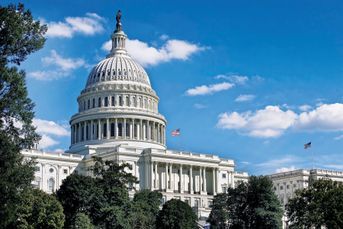It’s time to stop the trial bar’s assault on mutual funds
In global comparisons of how well mutual funds serve their investors, U.S. funds come through with flying colors.
In global comparisons of how well mutual funds serve their investors, U.S. funds come through with flying colors. But that isn’t good enough for the trial lawyers who are turning American business into a game of legal roulette.
They continue to swarm U.S. mutual funds with allegations of “excessive” fees. Today, these lawyers will have their day before the Supreme Court, and if they win, the real losers will be American investors.
Since 2003, the number of lawsuits filed in U.S. courts against mutual fund advisers has risen sharply. In some years, cases involving funds represent almost 10% of all federal securities class actions.
Overall, according to the Securities Litigation Report newsletter, more than 500 private class actions and derivative suits have been filed against mutual fund advisers.
The legal attack is especially ironic, given U.S. funds’ performance.
A Morningstar Inc. study in May of mutual funds in 16 countries identified the United States as the best market for fund investors, based on fees, investor protection, transparency, choice and other factors. U.S. funds were the only ones to earn an overall A — and a key reason was the world’s lowest average annual expense ratios.
But in the case of Jones v. Harris Associates LP, to be heard today by the Supreme Court, aggressive trial lawyers are trying to overturn the legal framework used to judge those fees.
Under a 1982 decision by the 2nd U.S. Circuit Court of Appeals, Gartenberg v. Merrill Lynch, courts consider claims that an investment adviser’s fees are excessive in light of a variety of factors, giving considerable weight to the judgment of independent directors who must approve the adviser’s contract and fees.
The plaintiffs’ bar proposes a standard that would gut this precedent, inviting contingency fee lawyers to file annual lawsuits to drag each fund’s fee decisions in front of a federal judge. The likely results: higher costs for funds, fewer advisers in the fund business and less choice for investors.
How does the plaintiffs’ bar justify this legal attack?
First, it insists that there is no competition in the fund industry as demonstrated by the fact that fund boards rarely fire advisers. But that misses the point.
The real competition is for investor dollars, and investors hire and fire fund managers every day.
With more than 8,000 funds from which to choose, investors can move their money with a couple of phone calls or a few clicks of the mouse, and they do. Each year from 1990 to 2008, between 25% and 70% of fund advisers experienced net cash outflows.
The trial lawyers also point to the gap between fees that advisers charge mutual funds and the generally lower fees they charge such institutional clients as pension funds.
The two fees should be identical, the plaintiffs say. But the services, capital commitments, risks and regulations involved in serving these two classes of clients are worlds apart.
With an average mutual fund account balance of $26,000, an adviser must gain and service more than 1,500 fund accounts just to match the $41 million average balance of an institutional account.
The dangers that excessive litigation pose to U.S. capital markets are well-known.
In 2006, a commission headed by John Thornton, chairman of The Brookings Institution, and Glenn Hubbard, dean of Columbia Business School, warned that the unique American institution of class actions in securities law resulted in $150 million of liabilities in 1995. By 2004, that had exploded to $3.5 billion.
A commission headed by Sen. Charles Schumer, D-N.Y., and New York Mayor Michael Bloomberg warned in 2007 that the U.S. must “reduce spurious and meritless litigation, and eliminate the perception of arbitrary justice.”
U.S. judges are taking note. In a mutual fund case similar to Jones, a panel of judges administered a sharp rap across the trial bar’s knuckles: “We cannot help but observe that the complaints filed in this case are strikingly similar to prior claims brought — including one in this circuit — by plaintiffs’ counsel, all of which have been dismissed.”
One of the judges on that panel was Sonia Sotomayor, now the newest member of the Supreme Court.
It will take more than a knuckle rap, however, to stop American trial lawyers from swarming after mutual fund advisers. Let’s hope that the high court recognizes that if the trial lawyers win, it is investors who will get stung.
Paul Schott Stevens is president and chief executive of the Investment Company Institute, the national trade association for mutual funds and other registered investment companies.
Learn more about reprints and licensing for this article.




